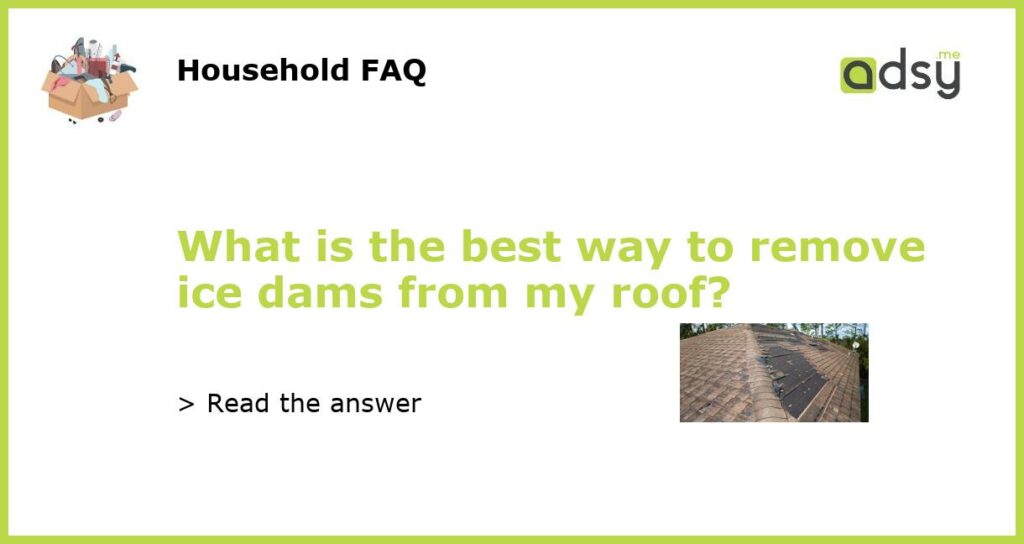Understanding Ice Dams and their Impact
Ice dams are a common problem faced by homeowners in cold climates. They occur when snow on the roof melts, and then refreezes at the edges of the roof. This cycle creates a ridge of ice, preventing melting snow from properly draining off the roof. As a result, water can seep into the house, causing damage to the roof, walls, insulation, and even the interior of the property. Therefore, it’s important to take prompt action to remove ice dams and prevent further damage.
The Traditional Approach: Roof Raking
One of the most widely used methods for removing ice dams is roof raking. This method involves using a long-handled rake or brush to remove snow from the roof’s edges. By clearing away the snow, you can prevent further melting and refreezing, reducing the risk of ice dams forming. Roof raking is a relatively safe and cost-effective method that can be done by most homeowners. However, it can be labor-intensive and may not be suitable for roofs with steep slopes or high levels of accumulated snow.
Using Heat Cables to Prevent Ice Dams
If you regularly experience ice dams, you may want to consider installing heat cables on your roof. Heat cables are electrically powered wires that run along the edges of the roof and gutters. When they’re turned on, they generate enough heat to melt the snow and ice, allowing the water to drain properly. While heat cables can be effective in preventing ice dams, they may not be suitable for every situation. They require professional installation and may increase your energy costs. It’s important to consult with a roofing specialist to determine if heat cables are the right solution for your home.
Professional Ice Dam Removal Services
In some cases, it may be necessary to hire professional ice dam removal services. This is especially true if you have a large and stubborn ice dam that cannot be easily removed with roof raking or heat cables. Professional services often use methods such as steam or high-pressure hot water to melt the ice dams without causing damage to the roof. The advantage of hiring professionals is that they have the experience, equipment, and knowledge to safely and effectively remove ice dams, reducing the risk of further damage to your home.
Preventing Ice Dams in the Future
While removing ice dams is important, it’s equally important to take steps to prevent them from forming in the future. Here are some preventative measures you can take:
- Ensure proper insulation: Adequate insulation in the attic can help prevent heat from escaping and melting snow on the roof.
- Improve ventilation: Proper attic ventilation allows cold air to circulate, preventing snow from melting and refreezing at the roof edges.
- Seal air leaks: Seal any gaps or cracks in the roof, walls, and attic to prevent warm air from escaping and causing snow to melt.
- Clean gutters and downspouts: Regularly clean your gutters and downspouts to ensure proper drainage and prevent ice dam formation.
- Remove accumulated snow: After each snowfall, safely remove some of the snow from the roof to minimize the risk of ice dams.

